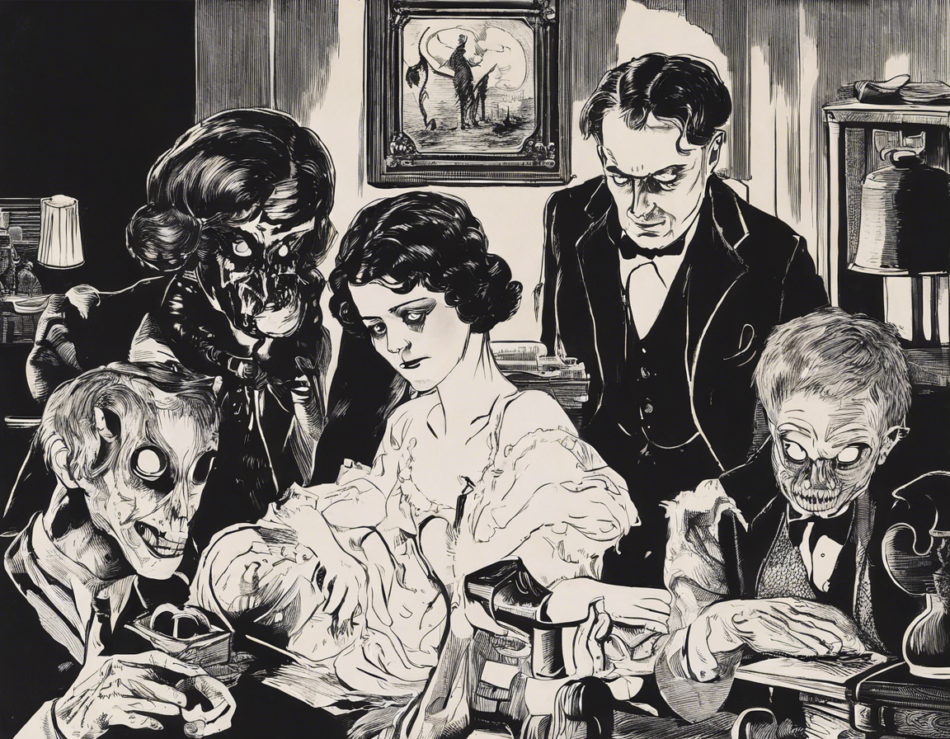The year 1920 marked a significant period in history, characterized by post-war trauma, societal upheavals, and a new wave of artistic expression. This era saw a profound shift in the way people viewed the world and themselves, leading to a newfound interest in exploring the complexities of the human psyche, particularly the horrors of the heart. Writers, artists, and thinkers delved deep into the darker aspects of human emotions, presenting a stark contrast to the optimism of the preceding decades. In this article, we will explore the themes of heartache, loss, despair, and madness that permeated the cultural landscape of 1920.
The Aftermath of War: A Pervading Sense of Loss
The aftermath of World War I left a deep scar on the collective consciousness of society. The loss of millions of lives, the destruction of cities, and the disillusionment of the survivors created a pervasive sense of despair. This despair seeped into the artistic expressions of the time, giving rise to a wave of literature, art, and music that reflected the inner turmoil of the human soul.
Heartache and Longing: Themes of Unrequited Love
The 1920s saw a resurgence of interest in romanticism, albeit with a darker twist. The themes of heartache and longing were prevalent in the works of writers such as F. Scott Fitzgerald, T.S. Eliot, and Virginia Woolf. These writers captured the essence of unrequited love, shattered dreams, and the ache of longing for something that could never be attained.
Madness and Despair: Exploring the Depths of the Human Psyche
The exploration of madness and despair became a recurring motif in 1920s literature and art. Artists such as Salvador Dali and writers like Franz Kafka delved deep into the abyss of the human psyche, presenting a distorted and surreal reflection of reality. The existential dread and sense of alienation that pervaded their works struck a chord with audiences grappling with their own inner demons.
The Birth of Modernism: Breaking Tradition and Embracing the Avant-Garde
The 1920s marked the birth of modernism, a cultural movement that rejected traditional forms of expression in favor of innovation and experimentation. Artists and writers sought to break free from the constraints of the past, embracing the avant-garde in their quest to capture the complexities of the human experience. This spirit of rebellion and artistic freedom gave rise to groundbreaking works that challenged conventions and pushed the boundaries of creativity.
The Legacy of 1920: Impact on Contemporary Art and Literature
The legacy of 1920 continues to reverberate in contemporary art and literature, shaping the way we perceive and interpret the human experience. The themes of heartache, loss, despair, and madness explored in the works of the 1920s continue to resonate with audiences, highlighting the universal nature of human emotions and struggles. As we look back on this tumultuous period in history, we are reminded of the power of art to illuminate the darkest corners of the human heart.
Frequently Asked Questions (FAQs)
1. What were some of the key literary works from 1920 that explored the horrors of the heart?
Some of the key literary works from 1920 that delved into the horrors of the heart include T.S. Eliot’s “The Waste Land,” F. Scott Fitzgerald’s “This Side of Paradise,” and Franz Kafka’s “The Trial.”
2. How did the societal changes of the 1920s influence artistic expression?
The societal changes of the 1920s, such as post-war trauma and shifting gender roles, influenced artistic expression by creating a fertile ground for exploring themes of despair, madness, and longing.
3. What role did surrealism play in the artistic landscape of 1920?
Surrealism played a significant role in the artistic landscape of 1920 by challenging traditional notions of reality and exploring the depths of the human psyche through dream-like imagery and symbolism.
4. How did the horrors of the heart in 1920 contribute to the birth of modernism?
The horrors of the heart in 1920 contributed to the birth of modernism by prompting artists and writers to reject traditional forms of expression and embrace innovation and experimentation in their work.
5. What is the lasting impact of the themes explored in 1920 on contemporary art and literature?
The themes of heartache, loss, despair, and madness explored in 1920 continue to influence contemporary art and literature by highlighting the universal nature of human emotions and struggles, resonating with audiences across time and space.
